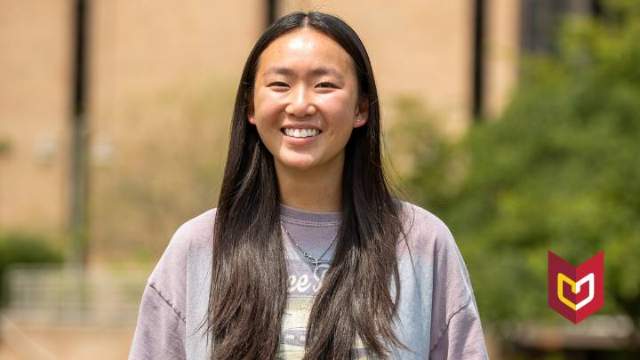From September 23 through October 10, Grand Rapids will serve as an art gallery to the world because of ArtPrize, the radically open art competition created by 2004 Calvin alumnus Rick DeVos and his staff.
DeVos spoke at the Ladies Literary Club on Tuesday, Sept 29, 2009 as part of an ArtPrize-centered Calvin Around Town event. He shared his thoughts about the genesis of ArtPrize, his hopes for the future of the event and his love for his hometown in this Q&A.
Calvin Around Town - Rick DeVos, ArtPrize from Calvin College on Vimeo.
Why did you decide to sponsor an art competition?
Actually I had started out thinking that I wanted to do a film festival. We went pretty far down the road of planning one, going to other ones and thinking about what we wanted to do. But the more we thought about it, the more we realized that a film festival is a fairly rigid event just by its nature. … You have committees. You have all of this centralized planning work. And after you do all of that work, it’s hard to compete with something like Sundance or Telluride. … I wanted to do something world class and something that would be fun and unique. And it really came from what could we do that was the opposite of the way a film festival is organized … So we talked about how do we open this up so that we’re talking about creative art and visual expression.
Why was ArtPrize designed as a radically open competition?
It came from that desire to open it up … Coming back to the idea about conversation. Coming back to the idea that we had a community … the idea of everyone is a potential artist or a donor. Trying to do something that’s unique, that raises the bar in terms of cultural education.
When did you get the sense that this ArtPrize idea was catching on?
It really seemed like in the last month or two that people were clicking—venues and artists … You can do whatever you want. The sky is the limit as far as what you can do. (We’re) seeing venues coming out with really interesting programming. Some of the venues have been interesting in terms of the artist they're inviting. We’ve been matching venues with artists. The goal of ArtPrize originally was 300 artists. We’re at four times that. We knew that it was a big idea and an idea that’s out of the ordinary and not without controversy. But we’ve certainly been blown away by the response … We’ve had venues thinking more about art and its relationship to their business, to their space and to their physical space. There’s been more discussion and thought put to them in the past month or two than in the past year.
How do you keep up with all of the moving parts of this competition?
Because it’s very intentionally decentralized. So we don’t have to keep up with everything. Because there’s so many individuals with their own goals and ideas involved. We’re very focused on specific things: that as many people know about ArtPrize as possible, that as many people are signed up as possible … It’s sort of an open-sourced model. We’ve set up this framework, and we have people creating their own value within that framework … It’s not up to us to try to command and control all that.
How will ArtPrize benefit the local economy?
I’m sure there will be an impact on the local economy. That’s not a goal; that’s a nice benefit. The goal is the conversation. There will be huge benefits regionally over time, with the growth of knowledge around these things. Shifting the culture is a primary driver. Short-term impact is not the primary driver.
Did you take any art classes when you were at Calvin?
I was doing film and film production stuff. So that was my creative outlet. I taught myself photography.
Are you excited to see the Calvin participation in ArtPrize?
Oh, absolutely. There’s great work that I’m seeing. And I think it’s great that Calvin’s had the downtown presence for a while now. I hope that this will build on the success of that.
What is your vision for the future of ArtPrize?
This is the first year. We really pushed the timeline to make it happen this year. Next year will be pretty awesome because there are about 50 things we wanted to do this year that we didn’t have time for. It’s only going to get bigger. We hope. We have a great history of public art. We have a community that’s more hungry for more cultural events. I’m doing it in Grand Rapids because I love Grand Rapids. It’s a real, personal community. It’s a nice size because we’re a big town, but people know each other. That sort of network makes things happen here.






